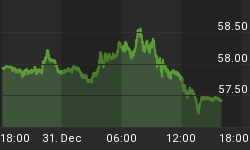Last Friday I said, shortly after the U.S. August Non-Farm Jobs Report was released, that I thought that report did "not identify or confirm" what I called a "certain trend" - that is "a trend that predictable with certainty". I also said that I thought the report
-
was immaterially different from the estimates that had been made;
-
a "ho-hum" event; and,
-
that if that report impacted the thinking of the Federal Reserve that would cause me to say "look out below".
The August Jobs Report did report that the Labor Department had made a downward adjustment of 58,000 jobs from its previously reported July figure of 162,000 non-farm new jobs to a much lower 104,000 new jobs in July. That peaked my interest, and I looked back on the number of adjustments made in each month in calendar 2012 and in the first seven months of calendar 2013. You can find the full monthly reports at Bureau of Labor Statistics, Employment Situation Archived News Releases.
The following are the results of my analysis of the U.S. Jobs Reports for the period January 2012 - July 2013:
-
without exception, every month's initial report made on the first Friday of the following month was adjusted, and several of those initial monthly reports were adjusted more than once;
-
in that 17 month period 7 months were adjusted downward. The downward adjustments ranged from 6% (January 2013) to 44% (June 2012). 10 months were adjusted upward. The upward adjustments ranged from 1% (May 2013) to 100% (August 2012);
-
in the 12 months ended December 2012 the aggregated adjusted jobs number was 15% higher than the aggregated initial jobs report. In the 7 months ended July 2013 the aggregated adjusted jobs number was 2% lower than the aggregated initial jobs report;
-
the average adjusted monthly jobs gain was 163,500 in calendar 2012. The average adjusted monthly jobs gain was 165,000 for the 7 months ended July 2013.
So what can be taken from this analysis? I suggest at least the following:
-
to place great weight for any reason on the initial U.S. Jobs Report made on the first Friday of each month makes little sense, as that reported number seems to be virtually certain of being adjusted. This seem a very reasonable conclusion given that in 15 of the 17 months ended July 2013 the adjusted monthly jobs number was +/-10% different from the initially reported number, and in 9 of those 15 months the adjusted monthly jobs number was +/-20% different from the initially reported number;
-
recall that the Federal Reserve introduced so-called QE3 (treasury bond purchases of $40 billion/month) almost exactly one year ago, and so-called QE4 (further treasury bond purchases of $45 billion/month) in mid-December - see my commentary United States: Federal Reserve December 12, 2012 Press Release (December 13, 2012). The average monthly adjusted net jobs increases that have trended flat since May 2012 to July 2013 must be very discouraging to Mr. Bernanke and the Federal Reserve Governors - particularly when one considers new jobs are consistently being reported as to a large degree being part-time jobs at the low end of the pay scale;
-
one has to wonder why the financial markets are so fussed over the near-term possibility of so-called "tapering" of Federal Reserve quantitative easing. On my analysis of jobs over the past many months it seems to me that for the Federal Reserve to "taper" QE at this point would be tantamount to "throwing in the towel"; and,
-
for President Obama to be pushing as he is for a military strike on Syria at this point in time suggests to me he must not be aware of all of the detail underlying all of the economic position America seems to me to find itself in. That would not be surprising, because a Chief Executive Officer can be expected to delegate more and more as an entity gets bigger and bigger - and no company in the world is close to being a big as the Untied States.
All of this certainly, as I said on Friday, confirms for me the "ho-hum" nature of the U.S. August (initial) Non-Farm Jobs Report, where "ho hum" means "same old, same old".
You might want to link to an article published in a Washington Post blog last Friday that includes a chart that shows seasonally adjusted U.S. non-farm jobs gains and losses by month from mid-2005 to date - see The five worst things about this crummy jobs report. It is not clear whether the chart shows the initial Jobs Reports numbers, or the final adjusted Jobs Reports numbers. The chart clearly shows that the Federal Reserve's quantitative easing programs - along with everything else that has happened in the U.S. economy - have resulting in U.S. job creation after August 2010, but that there is no pattern to those job gains that shows other than monthly gains over a comparatively narrow range. In other words, quantitative easing has contributed in some (I think unquantifiable - no pun intended) measure to monthly U.S. job gains, but those job gains are more of a "holding their own nature" than a real growth nature when measured against U.S. population growth over the same period.
With respect to the last statement, the best information I can find is that the current U.S. population is just under 317 million (U.S. "population clock"), and that population currently is growing by about 190,000 per month (calculation made based on US Population Growth Rate by Month statistic).
Bureau of Labor Statistics, Employment Situation Archived News Releases, 2012-2013 Employment Situation - reading time unlimited (United States Department of Labor). The five worst things about this crummy jobs report - reading time 3 minutes (The Washington Post).
















